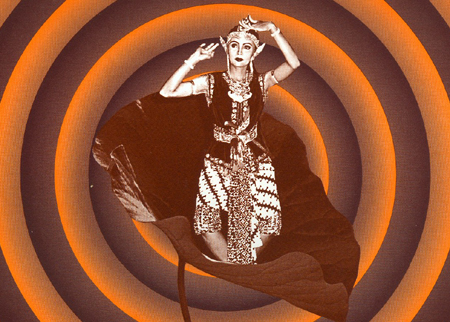tHE
pHiLOSOPHER'S
sTONE
pRESS rELEASE

The Cornell Gamelan Ensemble Presents an Evening of Indonesian
Music and Dance and a New Composition for Mixed Instrumentation, with Visiting
Artists.
On Tuesday, 6 May 2003, at 8:15 pm in the Barnes Hall Auditorium at Cornell University, the Cornell Gamelan Ensemble will present a program of traditional Indonesian music and dance and a new composition for mixed instrumentation. For the past year, the ensemble has been studying with Mr. Raharja, an expert musician and composer from Yogyakarta, Indonesia, who is a Freeman artist-in-residence at Cornell. In their May 6th performance, they will be joined by three visiting artists from Indonesia: Linangkung Nurwijayanti, an expert Javanese dancer; Harjito, a musician and composer in the central Javanese style from the city of Surakarta, currently teaching at Wesleyan University; and Dr. Sumarsam, professor of music at Wesleyan University. Along with two traditional Javanese dances, the program will feature the premiere of a tone-poem by New York City composer-performer, Patrick Grant, for Javanese gamelan, string trio, and two synthesizers, entitled "The Philosopher's Stone". This work is based on a scenario by the French Surrealist poet-playwright Antonin Artaud. Complete info on this commissioned work can be found at www.patrickgrant.net.
The traditional portion of the program will consist of pieces that are often played as accompaniment for shadow play and at ceremonies and celebrations in Java. In the first dance, "Gambyong Pareanom", Ms. Nurjayanti will be joined by a dozen of her students, who have been learning the fundamentals of Javanese dance with her for the past semester. Ms. Nurjayanti will also perform a solo dance, "Bayangkari", that was choreographed in the mid-20th century.
Musical ensembles composed predominantly of hanging gongs, gong-chimes, or drums are found throughout Southeast Asia. Gamelan ageng (big gamelan), which developed over the past 200 years in the courts of central Java, Indonesia, represent high points in the coalescence and refinement of such ensembles. Though gamelan are probably best known for their metal percussion instruments, the strong vocal tradition of central Java has been important in the development of most gamelan music. In soft-playing pieces of the large gamelan, the vocal and vocal-oriented instrumental parts are more evident than in the strong-playing pieces, that once served to honor arriving guests, accompany processions, or signal the occurrence of court events, inside and outside the palaces. The instruments on which Cornell Gamelan Ensemble plays are on long-term loan from the Metropolitan Museum of Art, gift of Carroll C. Bratman, 1977.
This performance is sponsored by the Cornell Department of Music, the Southeast Asia Program, and the Fund for Ethnomusicological Concerts at Cornell.
Contact: Martin Hatch (mfh2@cornell.edu)
Marty
Hatch
Department of Music and Department of Asian Studies
Cornell University
Ithaca, New York 14853, U.S.A.
607-2555049; fax: 607-2542877